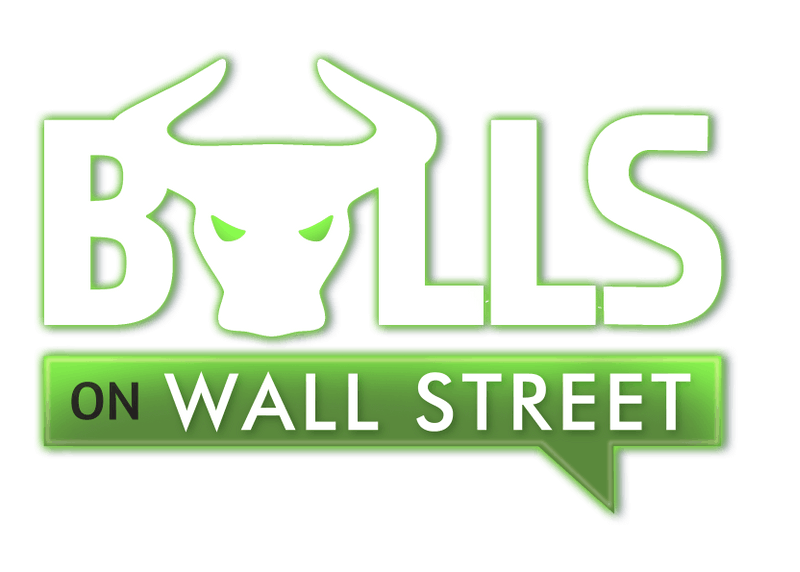So you want to start trading. Great! Trading can be immensely rewarding, providing professional satisfaction and financial independence to those who take the time to do it right. But please read that last line again – you need to tackle this is in a thoughtful way, not just charge in, buy and sell orders blazing.
I can speak from personal experience with this, as I started trading in college and didn’t approach things quite as methodically as I should have. While it satisfied my appetite for trading, it was a less educational period than it could have been.
The point at which a lot of people approach me about getting started as a trader is when they have $1,000 or so saved up – sometimes a bit more, sometimes a bit less. Usually, they want me to recommend a broker and some stocks to watch. Here’s what I tell them.
Getting Started
It’s really difficult to trade with only a $1,000, or even $2,000. Note that I didn’t say it was impossible, but it’s tough. And trading is challenging enough as it is, you don’t want to throw any more hurdles in your path than necessary. These are some of the challenges you will face:
 Brokers: The minimum for many brokers is $500 – $5000, with some of the discount brokers having no minimum at all. But – and this is very important – to open an account where you can trade much at all you need a margin account. With a non-margin account, there’s a settlement period for trades. Essentially, when you sell your stock, it takes several days for those funds to be deposited back in your account. This is sometimes referred to as “T+3,” meaning the funds from a sale must be received no later than three days after the trade.
Brokers: The minimum for many brokers is $500 – $5000, with some of the discount brokers having no minimum at all. But – and this is very important – to open an account where you can trade much at all you need a margin account. With a non-margin account, there’s a settlement period for trades. Essentially, when you sell your stock, it takes several days for those funds to be deposited back in your account. This is sometimes referred to as “T+3,” meaning the funds from a sale must be received no later than three days after the trade.
This could be a problem for any trader, but particularly so if you have a small $1000 account. Having to potentially wait several days to make a new trade while the last one settles can be incredibly frustrating, as you see good opportunities pass you by.
But there’s a way around that – margin accounts. With a margin account, that settlement period isn’t a problem. Once the trade is executed, those funds are available again to you immediately, so you can trade more frequently. Here’s the catch, though: the law requires you maintain a minimum balance of $2000 in your margin account at all times (this includes the value of your stocks). Some brokers require more than $2000, to provide a buffer, but none can go lower than $2000.
PDT: If you want to day trade, you are going to encounter another broker-based challenge – the Pattern Day Trade rule. According to FINRA:
The rules adopt the term “pattern day trader,” which includes any margin customer that day trades (buys then sells or sells short then buys the same security on the same day) four or more times in five business days, provided the number of day trades are more than six percent of the customer’s total trading activity for that same five-day period. Under the rules, a pattern day trader must maintain minimum equity of $25,000 on any day that the customer day trades. The required minimum equity must be in the account prior to any day-trading activities. If the account falls below the $25,000 requirement, the pattern day trader will not be permitted to day trade until the account is restored to the $25,000 minimum equity level.
In a nutshell, that means if you want to day trade regularly, you need to have $25,000.
Cost: Commissions and fees will eat you up in a $1k account. Every time you place a trade – buy, sell, short or cover – you are paying your broker a commission. The vast majority of these are flat rate – meaning you pay the same amount whether you are buying/selling $100 worth of stock, or $100,000. Let’s walk through a hypothetical trade to demonstrate the issue:
- You’ve been watching $ABC for a week. It looks ready to breakout. It’s currently trading at $20.
- After looking at the chart, you determine $22 as the price target – a 10% gain – if it runs the way you want.
- If it goes against you, $19 is the spot you will stop out. This would lead to a 5% loss
- You go all in, buying $1k worth of $ABC
This can go one of two ways:
- The trade goes your way and runs 10%. Commissions add up to $20 round trip. You can’t get out right at the top, so your gain is actually 9%. Your profit is $70
- The trade goes against you. You honor your stop loss and lose $50, plus $20 in commissions, for a total loss of $70.
You can see the problem here. You have to be a pretty good trader, with good stock picking abilities and even better execution skills to even break even, as you are always starting at a $20 deficit. But no one trades to break even; we want to make money!
A Better Option
Hopefully, you can see some of the issues you’ll face if you dive in and try to trade with $1,000 or $2,000. But don’t get discouraged! There are a lot of great things you can do to develop your knowledge and skills without placing trades. And by the time you’ve saved enough money to open that first account, you’ll be way ahead of the person who tried to trade with $1,000 and got discouraged by the losses.
Education: This is first for the simple reason that it’s most important. There’s a saying among traders that ‘everyone gets an education, one way or another.’ Some people spend years and thousands (or far more) dollars educating themselves with a series of failures in the market. Eventually, they either get it right through trial and error, go through a real educational course, or they give up on trading. Option two is superior, and I say that as someone who spent years learning the hard way before finally breaking through with the help of a mentor (more on that below). Here are a few educational resources you might want to check out:
- Investopedia: On your trading journey, you are going to encounter a lot of phrases and concepts with which you are unfamiliar. Need to know the difference between a Roth IRA and Traditional IRA? How shorting stocks actually works? What about ETF decay? Investopedia is the best place to turn for the correct definitions that everyone in the know is using.
- Investors Business Daily , TheStreet.com, and The Wall Street Journal: These are great, free resources to help familiarize yourself with some of the hot trends in the current market, and some of the different approaches to finding trading opportunities. Do NOT make the mistake of thinking you should jump in and start trading these picks, now or in the future. Instead, use these sites to familiarize yourself with trading trends and news that impacts the market.
- Finviz: This is a wonderful, free stock screening website. So how is that useful if you aren’t trading? Because you can – and should – begin testing your theories and strategies. When you learn about flag setups, see if you can find some with Finviz. Then see what happens – did you correctly identify them? What would have happened if you traded them?
- Chartgame.com: This one is fun and educational. The concept is simple: you are presented with a random large cap stock. You then choose when to buy and sell, and the game tracks your total gain or loss. It runs in a browser and is incredibly addictive. Don’t take your hypothetical gains and losses too seriously.
- Bulls on Wall Street: You probably already know that we have a comprehensive trading course, called the Bootcamp. This course goes over everything an aspiring day or swing trader would need to know. But we also provide other educational resources, including many, many free blog posts on aspects of trading, free trade review videos and webinars, and an introductory course!
Simulator: There are a number of simulators that can give you the experience of trading, without the risk of losing money. Examples include Think or Swim’s PaperMoney, TradingSim, and Ninja Trader’s platform. They all offer the features of a normal trading platform, like charting, indicators, a trading montage, and PnL tracking. Some, like TradingSim, offer additional features not found in a traditional platform, like the ability to replay past trading days (wouldn’t that be nice!?). Now, it’s important to realize that not having real money on the table limits the value of paper trading, as you don’t have the same emotions involved. But, they can still give you a feel for what it’s like to buy and sell stocks, manage your positions, scan, etc.
 Community: Trading can be a lonely activity, at times. But, there’s a massive, vibrant online community in which to participate. Because it’s something so many people are passionate about, you’ll find traders of every skill level happily providing free information and trading ideas. As with the trading news sites mentioned above, take what you read with a grain of salt – once you start trading, don’t start following someone’s trades blindly, regardless of how knowledgeable they seemed in a forum. But, forums can be a great way to learn, get specific trading ideas, and find friends who can provide companionship and encouragement.
Community: Trading can be a lonely activity, at times. But, there’s a massive, vibrant online community in which to participate. Because it’s something so many people are passionate about, you’ll find traders of every skill level happily providing free information and trading ideas. As with the trading news sites mentioned above, take what you read with a grain of salt – once you start trading, don’t start following someone’s trades blindly, regardless of how knowledgeable they seemed in a forum. But, forums can be a great way to learn, get specific trading ideas, and find friends who can provide companionship and encouragement.
Mentorship: This is a great time to begin the search for a trading mentor. Though you will be a bit limited in what a mentor can teach you if you aren’t trading with real money yet, the flip side of that is that you will have fewer bad habits that need to be undone. I’ve discussed before the power of a mentor; not only will a good mentor impart knowledge, he or she will be able to correct your individual mistakes – sometimes, they will point out mistakes you don’t even know you are making.
Next Steps
So when is it time to actually start trading? There’s no one-size-fits-all answer to that question. Saving up $5,000 while you are learning and practicing on a simulator is a great goal. You can certainly trade with less; some traders need more. But with $5,000, you will be able to open an account and begin making some swing trades, and the occasional day trade. If you are trading on a simulator and cannot seem to make money with some consistency, then you are probably not ready to trade real money yet. That’s not to infer that your success – or lack thereof – on a simulator will translate to actual trading, but live trading certainly won’t be easier than simulated trading.
Once you do start trading, focus on learning a couple setups at first. It’s far better to master one or two strategies than fumble through ten of them. If you can master just one or two, you’ll often be surprised how quickly you can grow your small account into a large one.
Take your time. Save some money. Invest in yourself. The market and all its opportunities will be waiting for you!
Learn How to Day Trade and Swing Trade Through Live Classes
Spots are filling up in our trading boot camp FAST.
Click here to apply for our next trading boot camp!

